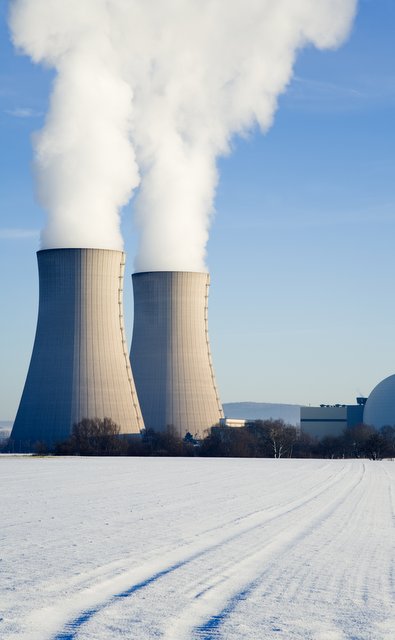Nuclear Energy
 Nuclear power plant (Photo: GettyImages)The current pattern of energy production and utilization in the Arctic relies heavily on fossil fuels that are non-renewable sources of energy. Yet, another main contributor to the production of energy in form of heat and electricity is nuclear power.
Nuclear power plant (Photo: GettyImages)The current pattern of energy production and utilization in the Arctic relies heavily on fossil fuels that are non-renewable sources of energy. Yet, another main contributor to the production of energy in form of heat and electricity is nuclear power.
The production of energy is based on the process of nuclear fission. There are different types of reactors that generate heat and drive turbines which again produce electricity. In the Arctic, nuclear power plants can be found in USA, Canada, Sweden, Finland and Russia. Nuclear based energy is also used to power marine vessels such as US-American, British and Russian nuclear submarines, surface warships and icebreakers.
Nuclear power is on the global scale in the focus of a hot debate. On one side the current fission based reactor technologies provides the possibility of generating large quantities of energy for a growing global demand while emitting zero CO2.
On the other hand there are questions of safety, health and environmental protection: The world has seen three major nuclear power plant accidents since 1979. They were in Three Mile Island / USA, Chernobyl / Ukraine and Fukushima Daiichi / Japan. Especially in the case of Chernobyl large areas around the plant have been contaminated for decades - causing severe impacts on people and ecosystems both in the immediate vicinity of the plant and thousands of kilometres away.
In the Arctic, the effects of Chernobyl have been felt as well - but also of several nuclear powered submarine accidents in the Barents Sea and Atlantic Ocean.
Despite questions of technical safety, another challenge linked to the current nuclear technologies is the question of how to dispose or reprocess nuclear waste that occurs within the process of power generation.
The choice is either to deposit the nuclear rods. A solution that requires a safe storage that guarantees no leakage of radiation - not only for decades but centuries. Or to reprocess nuclear rods to be used again.
In both cases costly transportation at high safety levels is required between the plant and the final storage place - or reprocessing plant. In the near future, especially Russia has plans to extend its power production in the Arctic by floating reactors ("barges") that could provide the required energy for expanding oil and gas industries in the Arctic area in Russia's North.
Finland has plans to construct a new nuclear power plant as well according to highest safety standards currently known and possible.
There are hopes that one day a controlled nuclear fusion process will be possible and feasible. In this case, an almost infinite source of power with no nuclear waste would be available and could satisfy the energy demand of an ever growing mankind.
Sources: UArctic IEA World Nuclear News CIGI Idaho National Engineering and Environmental Laboratory








